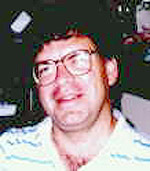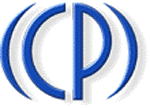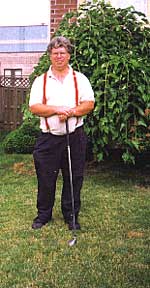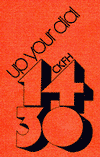
REEL TOP 40 RADIO REPOSITORY

REEL TOP 40 RADIO REPOSITORY
Dale Patterson
remembers the time and place when he was turned on to Top 40 radio. It was April, 1966 and a friend of his asked if he had ever listened to CHUM (Toronto). "No," he said. His parents listened to CFRB (full service MOR) in the house and it never occured to him to check out other stations.
Dale says, "I was a TV addict then, but one listen to CHUM and I was hooked ... the music, the personalities, the jingles .. I never went back to TV again. To this day there are many 'classic' television shows I've never seen."
After a few months of listening to nothing but CHUM, Dale began branching out to other stations, like WKBW and WYSL Buffalo, WABC New York and the newly-converted Toronto rocker CKFH.
In 1975, Dale entered the broadcasting field as an editor/reporter for the Canadian news agency Broadcast News. (He still works there on the print side at The Canadian Press.)
Dale says,
In 1996, I started a web site devoted to rock'n' roll radio history, Rock Radio Scrapbook. About the same time, I got quite interested in collecting airchecks, and have heard a lot of great radio since. I hope you enjoy these airchecks."
[Descriptions by Dale Patterson unless otherwise indicated]
. . . though the nose cone carrying (the monkey) was not recovered, the test was called a success . . .
Close your eyes and you're back in a world without personal computers and cable TV, where AM radio was king, crack was something you avoided on the sidewalk, and life seemed to move just a little slower.
It's Christmastime, 1958. To a six-year old living in Etobicoke, Ontario, and a whole bunch of kids elsewhere, Santa Claus is coming to town and a lifetime of memories are ahead.
. . . You're at the home of the Lively Guys . . .
Williams could have worked in almost any major market he choose, after all, he did a stint in mornings at KDEO in San Diego in the early 1960s. But he fell in love with the medium market of London, Ont., after arriving there after his San Diego stint. He's still there.
This aircheck is one of my all-time personal favorites. The tape has been digitally enhanced, thanks to the superb work of Charlie Ritenburg of Richmond Hill, Ont. And even though on the tape Dick says it's January 7, 1964, it really is 1965!
. . . it's the second of five heavyweight happenings in a row . . .
For years, starting in 1957, CHUM radio was the dominant Top 40 powerhouse in Toronto radio. Sure CKEY gave them a good run in the early '60s, but they were gone - an MOR station - by 1965. But by 1967, another challenger had appeared, the quirky, unpredictable CKFH. They played the songs CHUM didn't play: British hits, album cuts, rhythm and blues. Their deejay lineup ranged from the offbeat Big G. Walters to the master of the Top 40 format in Toronto - Dan O'Neil. And with all due respect to the
legendary CHUM, it was the anti-CHUM.
One of the early on-air personalities at 'FH was English-born Keith Hampshire, who came to the station in 1968 after a stint at Radio Caroline. He was let go, on his birthday, in 1969, and has gone on to a successful career as one of Canada's top commercial voice talents.
(NOTE: The date of this aircheck is in some dispute. Hampshire says he left the
station in November, 1969 yet the vintage of these songs seems to be January 1970. You be the judge.)
. . . stick it in your ear . . .
It was one of America's original radio stations. It was also one of America's most original radio stations.
Some of Buffalo's most legendary personalities worked at WGR during its heyday as a
contemporary music station from 1972 to 1989. Stan Roberts, George Hamberger and Tom Shannon all did stints in morning drive, with Andersen, Joe Galusky and Craig Matthews appearing in middays during that period. The witty Frank Benny did afternoon drive during much of WGR's Top 40 era, and the outspoken Shane (a.k.a. Ron Gibson) was the station's early evening
dee-jay of record during the golden years. Veteran talk show host John Otto was a
late-evening mainstay as was Tom Donahue. A variety of hosts - including Hank Nevins and Jim Scott handled overnight duties. Weekenders included Jerry Reo and the late Mike Rohzman.
One of WGR's most remembered personalities never held a Monday-Friday shift there. Jerry Farrell had a full-time job at the Niagara Falls Power Authority during the week and only had time for weekend broadcast week. But he made the most of it during his years at WKBW and WGR.
About a year after this tape was made, Farrell died of a heart attack at age 46. Here he is on April 11, 1976 in a classic aircheck from WGR, "Great Radio."
[Description by Uncle Ricky]
. . .
On this, the United States' 200th Birthday, we're countin' down the Fourth of July's Greatest Hits on American Top 40
. . .
On July 6, 2001, REELRADIO was pleased to present the first part of this 1976 broadcast from WPIX-FM in New York City. The first part of this show is a REELRADIO GOLDEN GIFT, contributed by Rick Nasoff.
On July 4, 2004, we thank The Dale Patterson Collection for contributing this concluding portion, which includes the #1 hits on July 4th for the years 1960 through 1976.
... "At the dawning of the Rock era, there was still considerable carryover on the Pop charts, with many non-rock artists ... continuing to do well."
...
At the beginning of this last-known version of the syndicated "History of Rock and Roll Time Sweep", you'll hear narrator Bill Drake offer the above comment concerning "considerable carryover", just before the "magic, music and memories" begin. If not offered as an apology for presenting Top 40 Radio as "Rock & Roll", it's certainly a partial explanation of a musical montage that was never exclusively "Rock & Roll".
Mr. Drake offers no such explanation for the 1960's, when that pesky "pop carryover"
Frank Sinatra had a number one hit while British groups dominated rock
music, or the 1970's, when Barry Manilow and John Denver are categorized not as "pop carryover", but "mellow rock" artists. Even the final segment of this Time Sweep (from 1981) includes "many non-rock artists continuing to do well" (like Eddie Rabbit, Kenny Rogers and Barbra Streisand). Were these also "carryovers?"
Top 40 radio was NOT "Rock & Roll" radio. Some rock music was presented in a "variety" format known as Top 40 — and that may have helped it become the dominant form of American popular music. This Time Sweep should really be titled "The History of Number One Records on Top 40 Radio" from 1956 - 1981.
Since then, diversification of formats, new and specialized outlets for recorded music, and the mass-marketing of highly-polarized musical forms (ie:
suburbanites identifying with urban cowboys and inner-city hoodlums) has all but
eliminated what was once the most loved and popular musical format on the radio.
Top 40 was special because it was NOT just Rock 'n' Roll. It was NEVER just one
type of popular contemporary music.
While the final "History of Rock & Roll" may never be written, the History
of Top 40 Radio is "in the books." It's all done, if not forgotten.
It has been called the day the music died. On May 10, 1982, WABC Musicradio ended its music format of more than 21 years when it switched to a talk format at the stroke of noon. The format went out in style as long-time WABC deejays and personal friends Ron Lundy and Dan Ingram co-hosted the last show.
The last minutes of WABC's music format were consumed with a medley of the stations number one songs over the year. That was followed by an emotional goodbye from Lundy and Ingram and then Imagine by John Lennon. After Imagine faded out, the WABC Chime Jingle was played for the last time - followed by a brief pause - and then, the first WABC Talkradio jingle was heard. One era had ended and another had begun.
. . . WKBW now becomes a thing of the past . . .
[Description by Dale Patterson ]
A jingle heard on the station near the end said, 'KB forever. It wasn't. On June 18, 1988,
an emotional Tom Donahue said goodbye to live-assist oldies at WWKB, Buffalo, N.Y.,
ending an era that started nearly 30 years before.
On July 4, 1958, WKBW began playing Top 40 music, and a legend was born. With a powerful
signal that reached 17 states and — in the words of Dick Biondi — "everyone
up there in Canada", 'KB radio grew over the years into one of the greatest Top 40 stations
in North America.
Joey Reynolds, Dan Neaverth, Stan Roberts, Don Berns, Sandy Beach, Jackson Armstrong, Tom Shannon, Fred Klestine and Shane were among the many who presented music shows. Irv Weinstein, Jim Fagan, Henry Brach, John Zach, Jim McLaughlin and others anchored a stand-out news department, a pioneer in the presentation of news in the Top 40 format.
There wasn't a dry eye in the house when Donahue said farewell that muggy night in 1988, as 'KB switched to a satellite oldies format. He went with a great collage of 'KB music, moments and memories. Western New York/Southern Ontario radio has never been the same.
After the final broadcast, I phoned Donahue and asked if he would send me a tape of the last show. He did, and it is presented here.
The Dale Patterson Collection has been part of REELRADIO since May 10, 1998
The Repository thanks Dale for sharing!

Dale Patterson

The Canadian Press

Swing along with Dale
![]()
"The high point came from 1985-1990 when I did a theme-driven oldies show at CING-FM in Burlington, Ontario. It remains a major highlight for me and I thank the late Norman B. for giving me a chance to go on the air.

![]() TOP STREAM 32.1Kbps (8 Khz)
TOP STREAM 32.1Kbps (8 Khz)
 Russ Conrad, KEX Portland, OR. December 13, 1958
(45:03)
Russ Conrad, KEX Portland, OR. December 13, 1958
(45:03)
Few airchecks have captured the moment — the era — as this one has for me.
![]() TOP STREAM 32.1Kbps (16 Khz)
TOP STREAM 32.1Kbps (16 Khz)
 Dick Williams, CFPL London, Ontario, January 1965
(28:14)
Dick Williams, CFPL London, Ontario, January 1965
(28:14)
 He called himself the "Tall One". But for many listeners to CFPL in London, Ontario during the 1960s, Dick Williams was the only one when it came to Top 40 radio.
He called himself the "Tall One". But for many listeners to CFPL in London, Ontario during the 1960s, Dick Williams was the only one when it came to Top 40 radio.
 In the mid-1960s, many station owners still had their doubts about this new-fangled rock'n' roll. Even after 10 years, was it really going to last? And what about our adult listeners? So many stations, especially those serving medium markets, reached a compromise: daytime programming would he reserved for middle of the road programming, with plenty of Percy Faith, Johnny Mathis and the Living Strings. Rock 'n' roll would be reserved for the evenings. That's when the kids were listening, weren't they? And who ever heard of an adult listening to rock 'n' roll?
In the mid-1960s, many station owners still had their doubts about this new-fangled rock'n' roll. Even after 10 years, was it really going to last? And what about our adult listeners? So many stations, especially those serving medium markets, reached a compromise: daytime programming would he reserved for middle of the road programming, with plenty of Percy Faith, Johnny Mathis and the Living Strings. Rock 'n' roll would be reserved for the evenings. That's when the kids were listening, weren't they? And who ever heard of an adult listening to rock 'n' roll?
 It was at such a station Dick Williams worked in the 1960's. His clever, fast-paced, humor-driven show became stuff of legend for CFPL's southwestern Ontario listeners, and one listen to this tape will show why. One can only assume that Williams had plenty of offers to work in a larger market with higher compensation, but he spurned them all to work in the charming, friendly city of London, Ont. Thousands of listeners there thank him still!
It was at such a station Dick Williams worked in the 1960's. His clever, fast-paced, humor-driven show became stuff of legend for CFPL's southwestern Ontario listeners, and one listen to this tape will show why. One can only assume that Williams had plenty of offers to work in a larger market with higher compensation, but he spurned them all to work in the charming, friendly city of London, Ont. Thousands of listeners there thank him still!
 TOP STREAM 20.7Kbps (10 Khz)
TOP STREAM 20.7Kbps (10 Khz)
 Keith Hampshire, CKFH Toronto, 1969-70
(5:43)
Keith Hampshire, CKFH Toronto, 1969-70
(5:43)
 They called themselves number-two radio. But in the hearts of many Toronto
radio listeners in the late '60s and early '70s CKFH was number-one.
They called themselves number-two radio. But in the hearts of many Toronto
radio listeners in the late '60s and early '70s CKFH was number-one.

 Jerry Farrell, WGR Buffalo, April 11, 1976
(13:19)
Jerry Farrell, WGR Buffalo, April 11, 1976
(13:19)
![]() WGR went on the air in 1922, one of the first radio stations in the United States. After 50 years as a full service station broadcasting everything from radio dramas to homemaker shows, WGR became a full-time contemporary music station in 1972, with a generous dash of oldies and a leaning toward middle of the road music. They played Abba, ZZ Top and everything in between. It was an interesting mix that reflected the programming genius of long-time PD Larry Andersen.
WGR went on the air in 1922, one of the first radio stations in the United States. After 50 years as a full service station broadcasting everything from radio dramas to homemaker shows, WGR became a full-time contemporary music station in 1972, with a generous dash of oldies and a leaning toward middle of the road music. They played Abba, ZZ Top and everything in between. It was an interesting mix that reflected the programming genius of long-time PD Larry Andersen.
 TOP STREAM 32Kbps (9 Khz)
TOP STREAM 32Kbps (9 Khz)
 WPIX-FM Casey Kasem American Top 40 July 4 1976,
WPIX-FM Casey Kasem American Top 40 July 4 1976,
Part Two
(01:04:00)
![]() Originally contributed as a Golden Gift by Dale R. Patterson
Originally contributed as a Golden Gift by Dale R. Patterson
 The History of Rock & Roll Time Sweep, 1981 (44:45)
The History of Rock & Roll Time Sweep, 1981 (44:45)
EDITORIAL COMMENT BY UNCLE RICKY
 Dec 55 - Jan 64
Dec 55 - Jan 64
Begins with Memories are Made of This, ends withThere, I've Said It Again Feb 64 - May 70
Feb 64 - May 70
Begins with I Want to Hold Your Hand, ends withThe Long and Winding Road May 70 - Oct 75
May 70 - Oct 75
Begins with Stop! The Love You Save, ends with Let's Do It Again Oct 75 - Feb '81
Oct 75 - Feb '81
Begins with Saturday Night, ends with I Love a Rainy Night 9/77 - 2/81
9/77 - 2/81
Starts after You Light Up My Life, where the earlier version of this syndicated release ends.
![]()
ORIGINAL ENCODING RA3, MARCH 28 1999
RE-ENCODED RA8 JANUARY 19, 2003
TOP STREAM 32Kbps, 16Khz Dan Ingram, Ron Lundy, WABC New York May 10 1982
(40:27)
Dan Ingram, Ron Lundy, WABC New York May 10 1982
(40:27)
. . . This is the last time I'll be able to say this - WABC, New York . . .
 TOP STREAM 32Kbps (10Khz)
TOP STREAM 32Kbps (10Khz)
 Farewell WKBW, WWKB Buffalo NY June 1988
(05:29)
Farewell WKBW, WWKB Buffalo NY June 1988
(05:29)

Reel Top 40 Radio Repository ©1996-2004 REELRADIO, Inc.